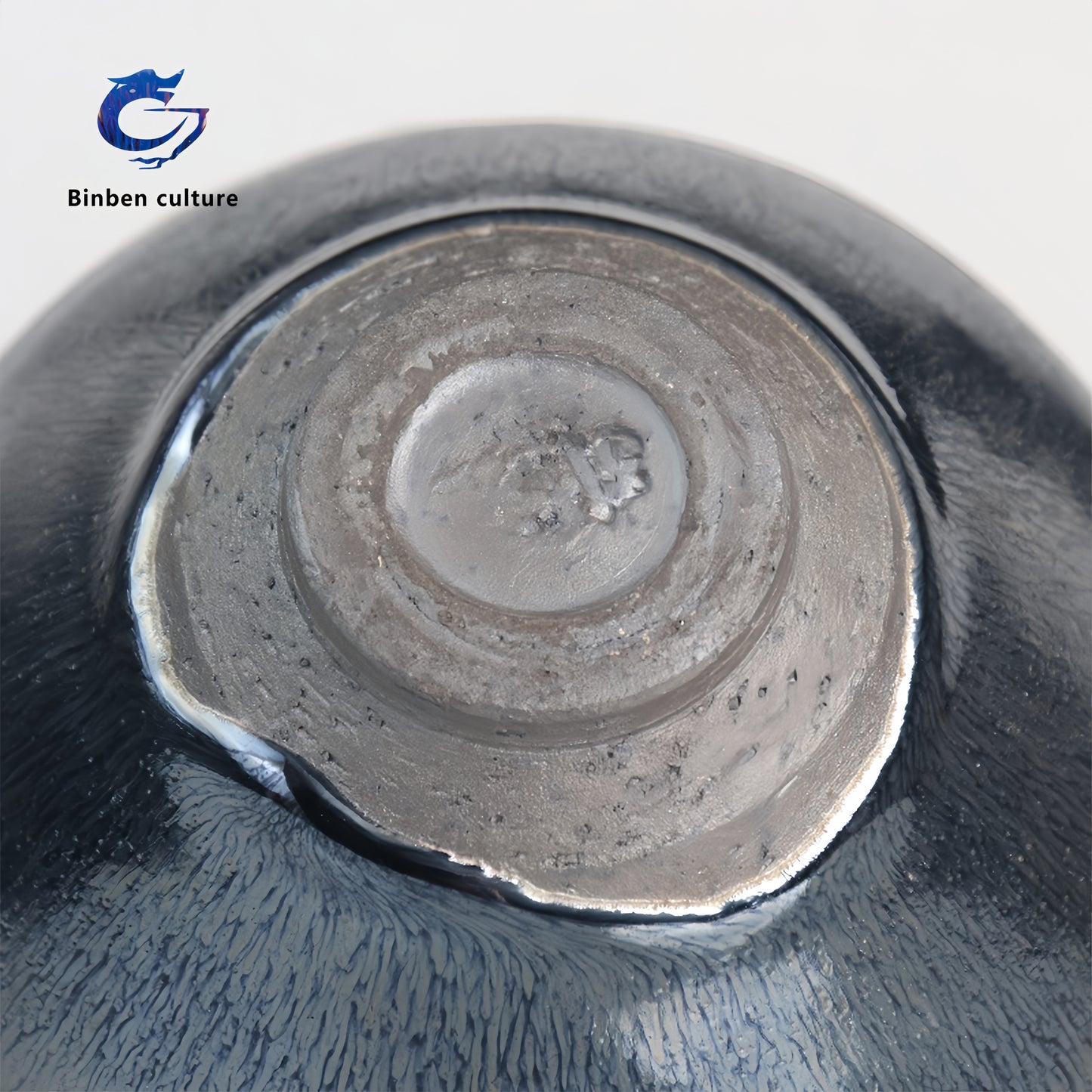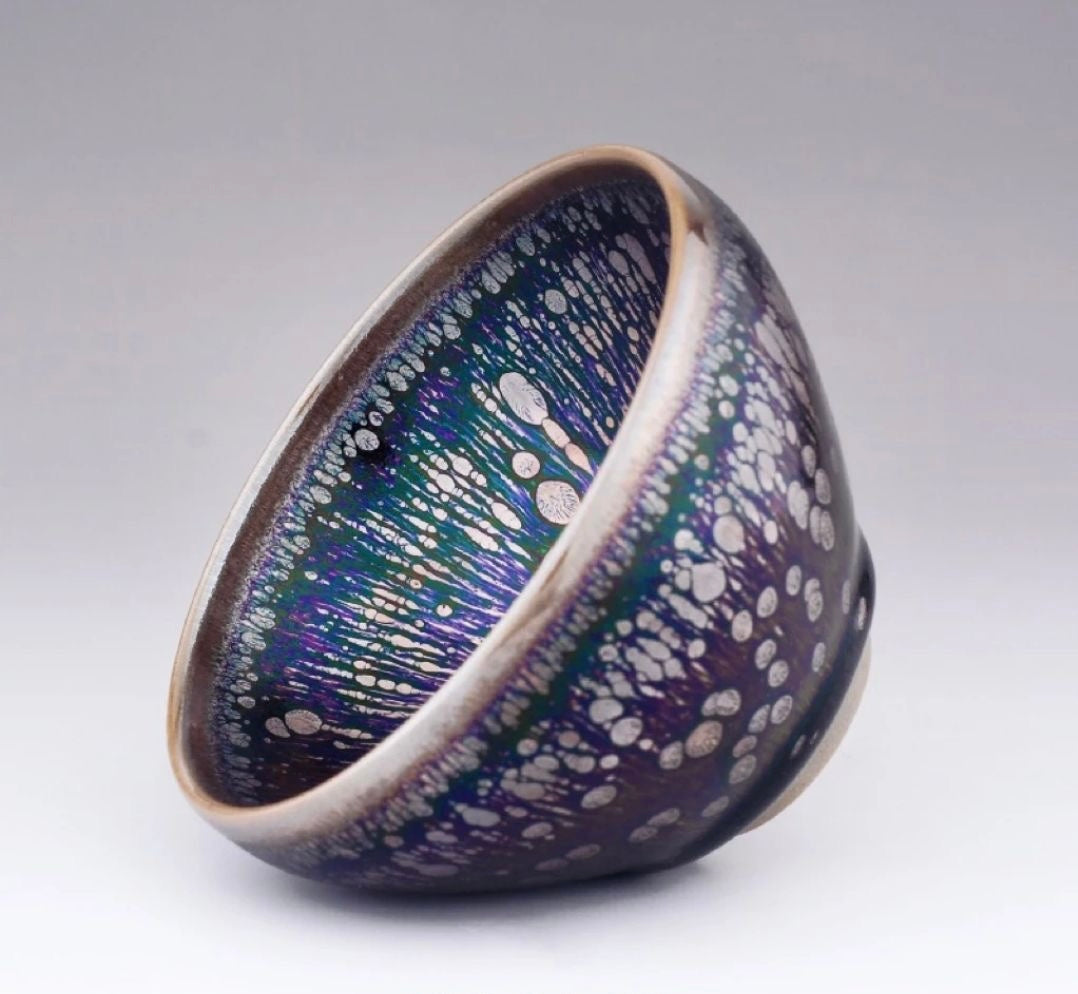Changjiang Sokichi Silver Coin
Changjiang Sokichi Silver Coin
Couldn't load pickup availability

Changjiang Sokichi (Japanese master ceramic artist, the ninth generation head of Seto ware) Changjiang Sokichi inherited his father's career, a Yohen restoration researcher, personally handled the only three Yohen tea bowls in the world, and conducted in-depth analysis on them. He published the paper "Results of Fluorescence X-ray Analysis of National Treasure Yohen Tenmoku Tea Bowls" and delivered a special lecture. He has been engaged in ceramic creation for more than 40 years and has been interviewed by NHK and other media many times. In the process of more than 30 years of imitation efforts, he traveled to China nearly 30 times and brought back dozens of tons of clay. NHK TV station filmed the clay piled up in his warehouse from the origin of his own Jianzhan.
Notice: Due to the transmutation in kiln, the pattern on each teaware will be slightly different. Therefore, every Jian zhan Tenmoku is unique and special, but it will be remained generally the same.
View full details




1. Clay selection. Jian Zhan's glaze and clay need to have a high iron content. Other kilns in the Song Dynasty tried to imitate Jian Zhan. Still, they usually could not succeed for the minerals in their geographic location could hardly meet the standards of making a Jian Zhan.
2. Crushing. Place the prepared clay and glaze in a machine for pulverization
3. Washing and sieve. The thickness of the clay or glaze should be moderate. After sieving, the clay needs to be put into the slurry tank, while the glaze needs to be placed in the glaze pool.
4. Chen Fu, which is a ceramic terminology, refers to placing the clay in a room away from sunlight and air, keeping a certain temperature and humidity, and storing it for a while.
5. Knead the clay. This process is aimed to further remove the air and impurities in the clay, make the mud dense, uniform humidity, and facilitate forming, meanwhile, it also prevents the clay from drying and cracking during post-production.
6. Shaping, is usually divided into hand shaping and machine shaping.
7. Modification. The traditional shape of Jian Zhan is mainly a shallow circle foot, and the base part and the “inner ring ” of the foot need to be modified by a knife.
8. Kiln the unglazed Jian Zhan. This process can increase the mechanical strength of the clay, and also remove a part of the cracked and fragile Jian Zhan in advance.
9. Blend glaze. The glaze formula of the ancient method is to use natural iron ore glaze and plant ash. These two simple substances can compose a beautiful glaze, which looks incredible, but the craft of making Jian Zhan is to use the simplest materials to create the most mysterious crystals.
10. Glazed. One of the big features of Jian Zhan's crafting is the half-glazed. Ancient people would specially design a glaze line to facilitate the control of the glaze range. Glazing also needs very skillful technique, ensure the glaze is moderate. If thin, the room for the growth of the crystal is too small to produce delicate works; if too thick, the glaze may easily stick to the bottom.
11. Put into the kiln. There is usually a need to place a layer of alumina powder on the bottom to avoid sticking.
12. Kiln and fire the Jian Zhan. The kiln is the most important process of making Jian Zhan. If the time, degree, and frequency of reduction are not well mastered, the desired glaze color will not be successfully created. After being put into the kiln, the master must concentrate on controlling the degree of reduction and not leave it for a long time.
13. Finishing kiln. After the kiln, due to various restrictions on the making process, each kiln will inevitably produce defective products, which must be disposed of on-site. Products that pass the quality inspection can be sold.
About BinBen Culture
At Binben Culture, we preserve the centuries-old legacy of Chinese ceramic mastery, blending time-honored techniques with modern design to create exquisite porcelain that elevates everyday life with artistry, quality, and cultural essence.
Featured collection
-
Xu Guozhu Dragon Kiln Wood-fired Jianzhan Master Cup Tea Cup Tea House Tianmu Cup Pure Handmade Tea Cup
Regular price $499.00 USDRegular price -
Fujian Jianyang Jianzhan tea cup partridge spot original ore owner
Regular price $469.00 USDRegular price -
Dangerous wood-fired Jianzhan pure handmade tea cup gold thread large tea cup host cup high-end collection single cup
Regular price $1,900.00 USDRegular price -
Jianzhan fine tea set Li Ximei pearl spot oil drop host cup Jianyang Jianzhan host cup
Regular price $999.00 USDRegular price
BinBen Culture
Seven Jian Zhan 07 31
Share










